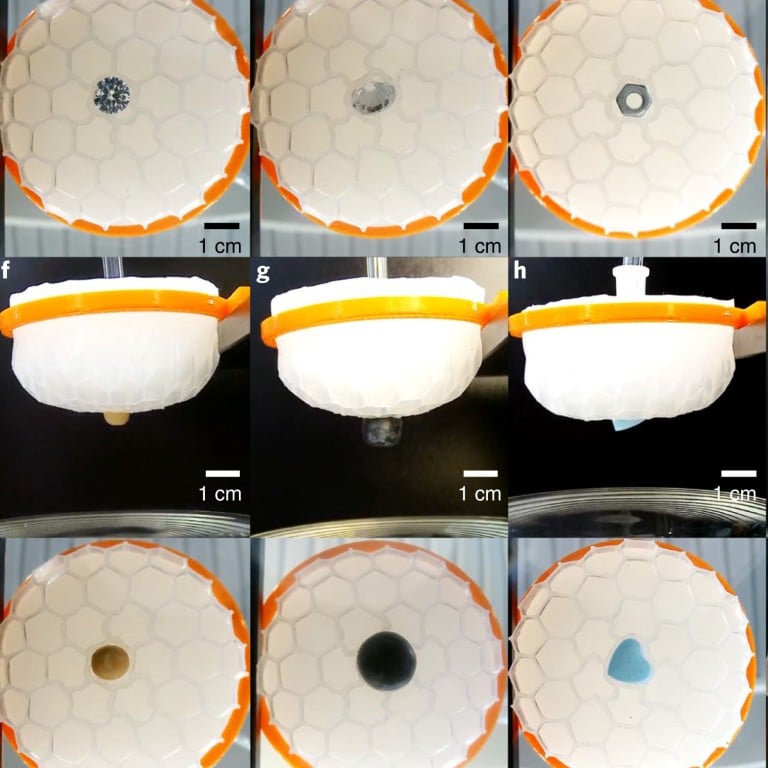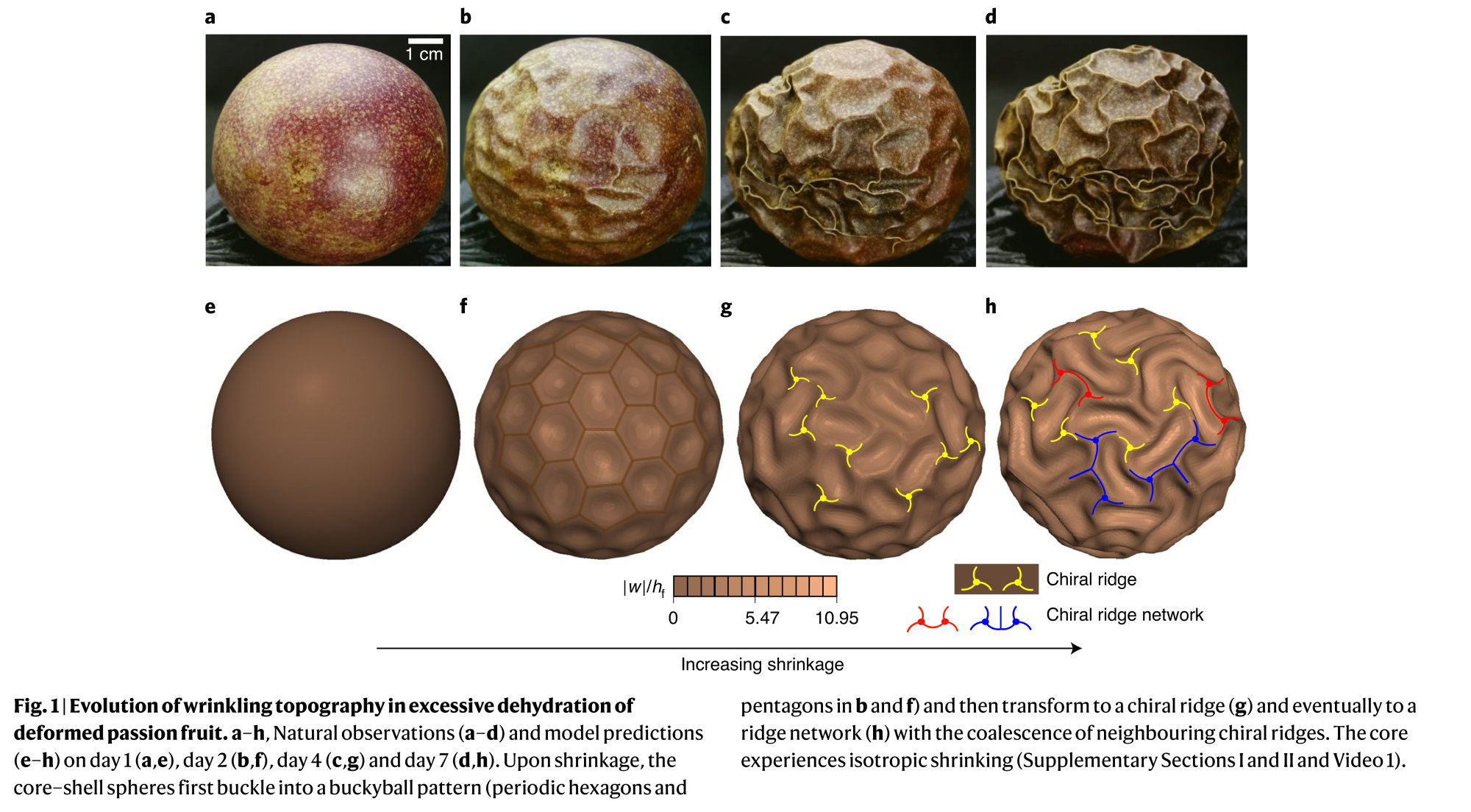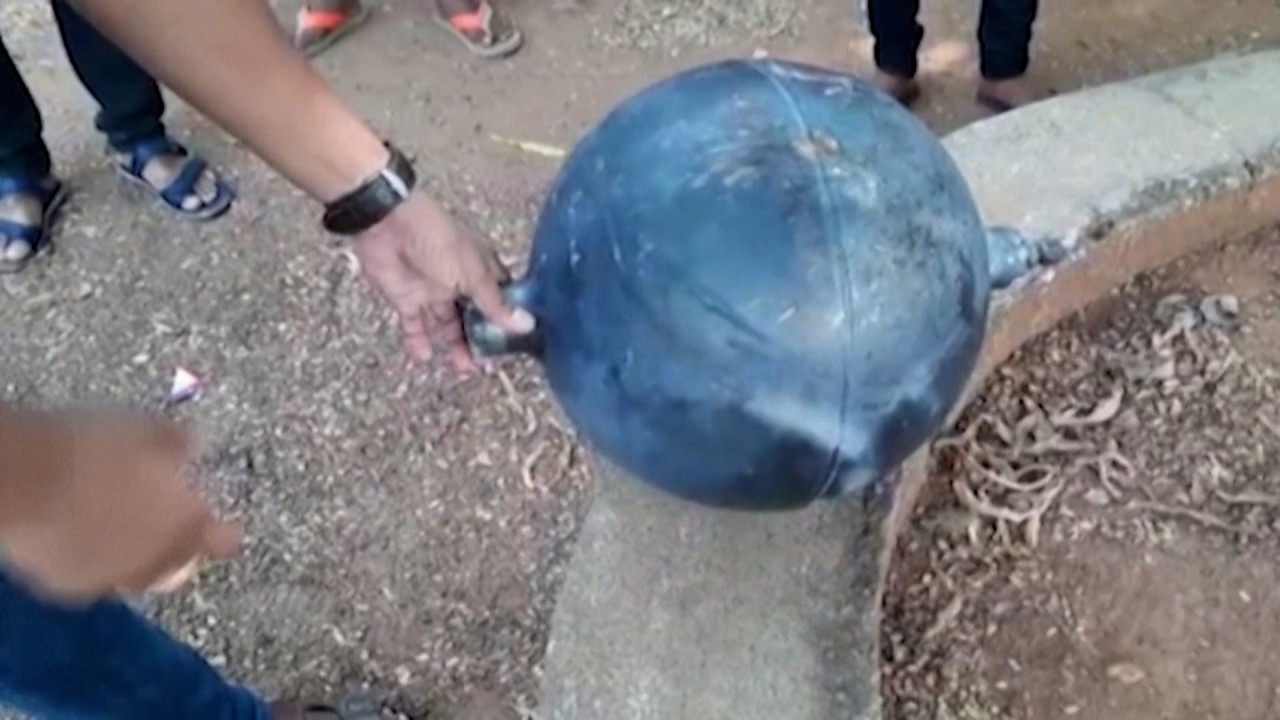
How dried passion fruit inspired a Chinese device that might help clean up space junk
- Silicone ball forms deep wrinkles that can ‘grab’ nearby items, from diamonds and glass to blueberries and soybeans
- Invention could be used to retrieve hazardous materials, hard-to-reach objects and debris that could harm spacecraft, researchers say
The deep wrinkles on the device’s surface can grasp a variety of objects – from diamonds to blueberries – and could even be used to clean up tiny particles of space junk floating in orbit, according to the scientists, whose findings were published in the peer-reviewed journal Nature Computational Science on Monday.

Xu Fan, a professor with the department of aeronautics and astronautics at Fudan University, said the simple and agile device could be made in sizes ranging from millimetres to metres and be deployed in places people could not reach.
The idea started with a box of fruit that was left at the office. Xu’s colleague at Tsinghua called to say he saw some interesting patterns taking shape in the withering produce, so the scientists started dehydrating passion fruit to observe them.
They found that the fruit first buckled into a buckyball shape, with hexagons and pentagons covering their surface in a pattern that resembled a football. As time passed, they developed a network of ridges that deepened as the fruit continued to dry out.
As they studied the ridges, they were inspired to mimic the patterns in the lab and put their observations to use. They found that the pattern of the ridges could “grasp” things, thanks to a property called “chirality”.
A chiral object has a mirror image that cannot be superimposed on itself. A common example is the human hand. The left is a reflection of the right, but the two cannot be placed on top of each other or rotated in a way that would make their shapes appear identical.

They created hemisphere-shaped moulds with a hexagonal pattern on the surface, which they filled with liquid silicone to make a ball. The ball has a small hole that serves as an air channel connecting an internal cavity and an external tube for air extraction.
When air is pumped out, the soft silicone ball shrinks like a dried passion fruit, tightly grasping any item next to it and locking it in place. When the device’s cavity is inflated, it releases the object.
Scientists say they have made a 3D printing ink without dyes and pigments
The team tested the device with a diamond, the hardest known material, grabbing it from multiple angles. They also used the device to grab other small objects, including nuts, screws, mung beans, soybeans, blueberries, heart-shaped candy, glass fragments and a glass ball.
Xu said the team would develop similar devices in other shapes, such as a human hand or animal paw, to recreate the precise grasping ability of fingers.
According to Xu, smart materials such as magnetic powder and liquid crystal could be used in future devices, allowing them to morph into different shapes.


